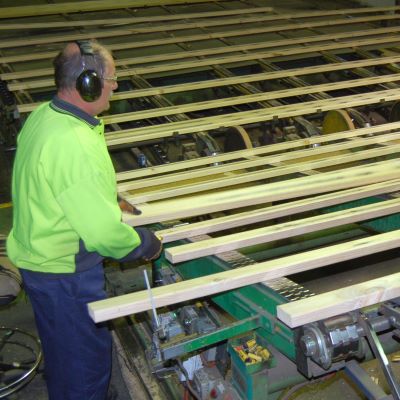SECTION 5: Structural timber grading

In this section, we’ll look in more detail at the principles of visual stress grading (grading by eye) and mechanical stress grading (using a machine to test and grade the timber).
You will need to have a good understanding of the concepts presented in the first four sections of this training resource before you start working through this section.
The background knowledge will help you to understand why certain characteristics in wood become strength-reducing ‘defects’ when the processed timber is used in a structure.
We’ll start by covering the fundamentals of structural timber grading, which apply to both visual and mechanical grading. Then we’ll look more closely at the Australian Standards relating to the visual stress grading of softwoods and hardwoods. You’ll see that although there is some degree of overlap between softwood and hardwood grading, there are also important differences, especially in the way knots are assessed.
You won’t need to get your own copies of these standards if you’re only interested in gaining a broad overview of the grading process. However, if you’ve enrolled in a formal grading course to become an accredited grader, you should either ask your employer for a copy of the relevant standard, or purchase your own from Standards Australia through their on-line portal: SAI Global.
The main Australian Standards relating to structural timber grading are:
AS 2082 Timber - Hardwood - Visually stress-graded for structural purposes
AS 2858 Timber - Softwood - Visually stress-graded for structural purposes
AS/NZS 1748 Timber - Mechanically stress-graded for structural purposes
AS 3818 Timber - Heavy structural products - Visually graded
Contents
There are eight lessons in this section: